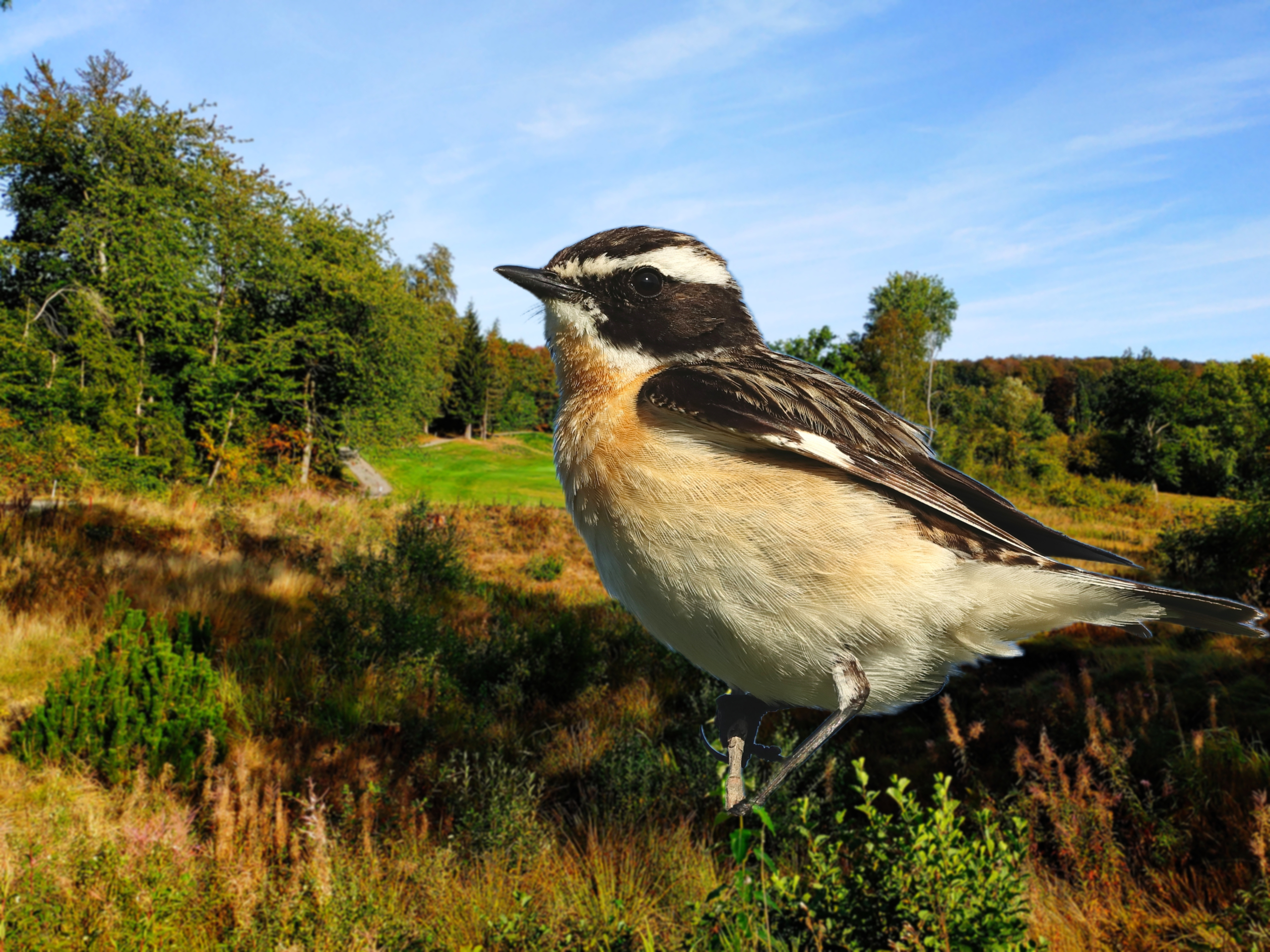Whinchat appreciates the golf course as a breeding ground
The Whinchat will be the focus of attention in 2023. The small animal, maximum twelve to 14 centimeters in size, is the bird of the year in Germany, but is considered endangered throughout Europe. It is agriculture in particular that is giving him a hard time. The meadow-nesting bird needs unmown meadows and flower strips, which are becoming fewer and fewer due to increasing intensive agriculture.
Golf courses in particular thus become an opportunity for the endangered bird. Away from fairways and greens, in flowering meadows, high roughs and in unused areas, the robin finds exactly what it is looking for: Insects, spiders, worms and, in autumn, berries. In damp meadows, along roadsides and in large fallows it can breed wonderfully and raise its offspring undisturbed. What’s more, it likes to sit on individual bushes, on stakes or poles to sing and keep a lookout.
In continental and northern Europe, however, you have to wait a little longer for the bird. It belongs to the long-distance migrants and spends the winter in the warm. So if you’re spending your winter vacation in Egypt, for example, you might spot a Whinchat or two there. It is back only in April, to breed then on uncut meadows and fallows.
The number of breeding pairs in Europe is unfortunately declining sharply. In Germany, NABU still assumes 19,500 to 35,000 breeding pairs; in Europe as a whole, there are probably 6.4 to 10.7 million pairs. Russia has the largest stock. But the bird is also on the red list in Great Britain, for example.
So anyone who spots the whinchat on their rounds this golf season can count themselves lucky: The occurrence indicates that the golf course obviously offers enough species-rich meadows where the bird finds its food. Congratulations!







